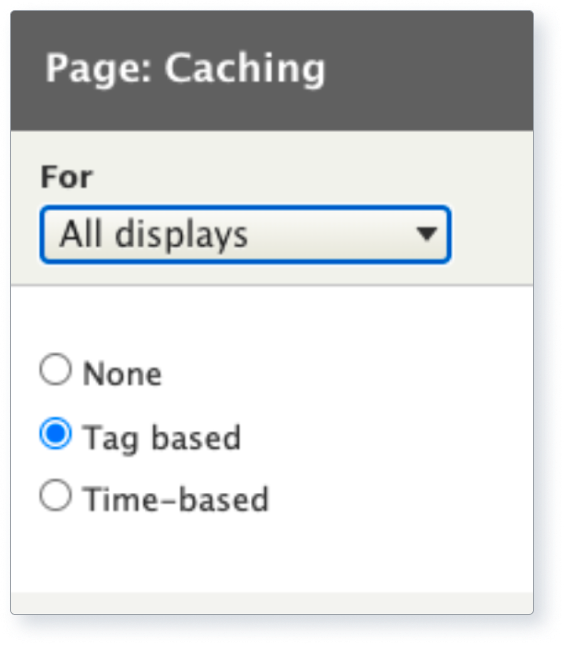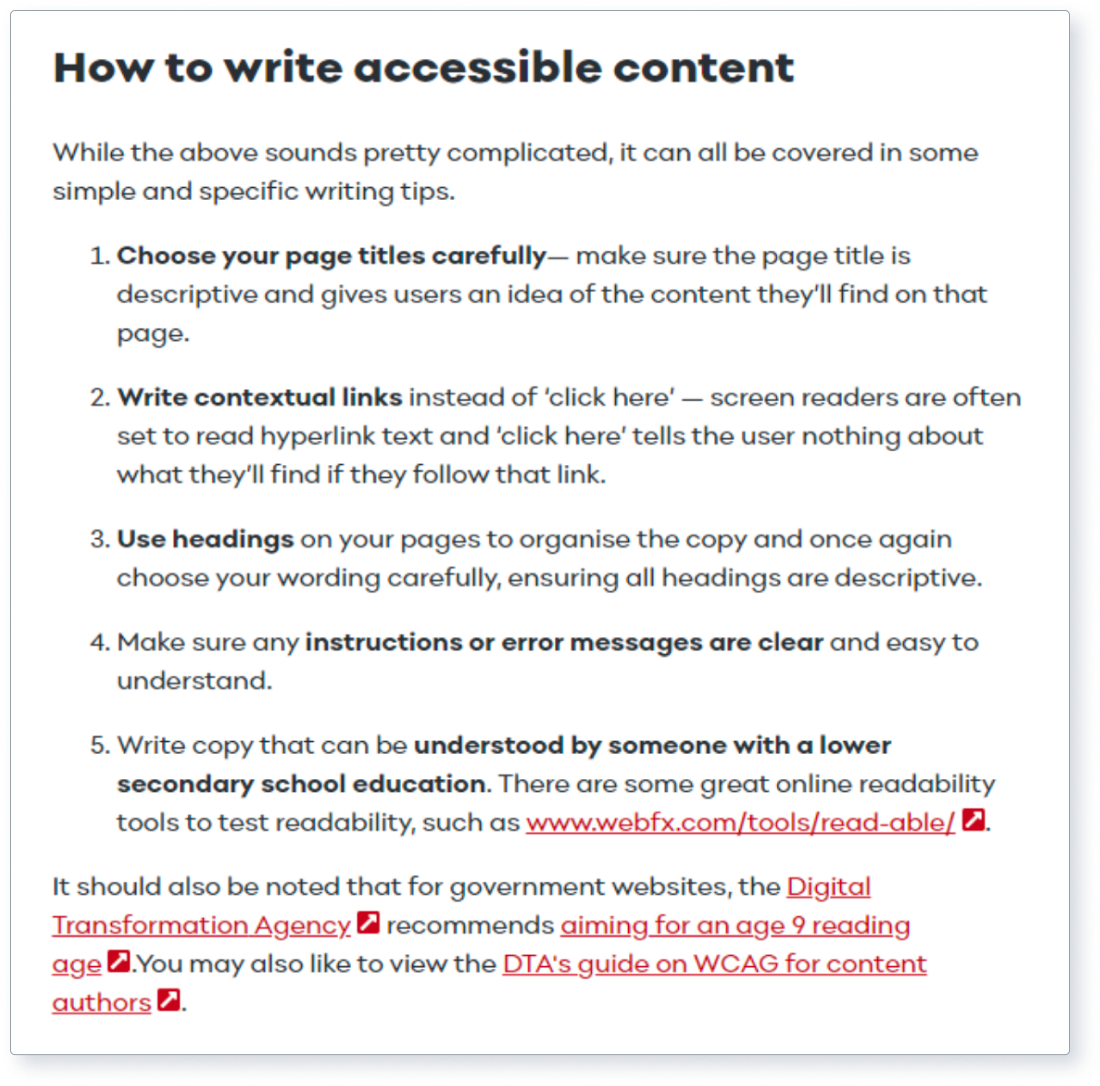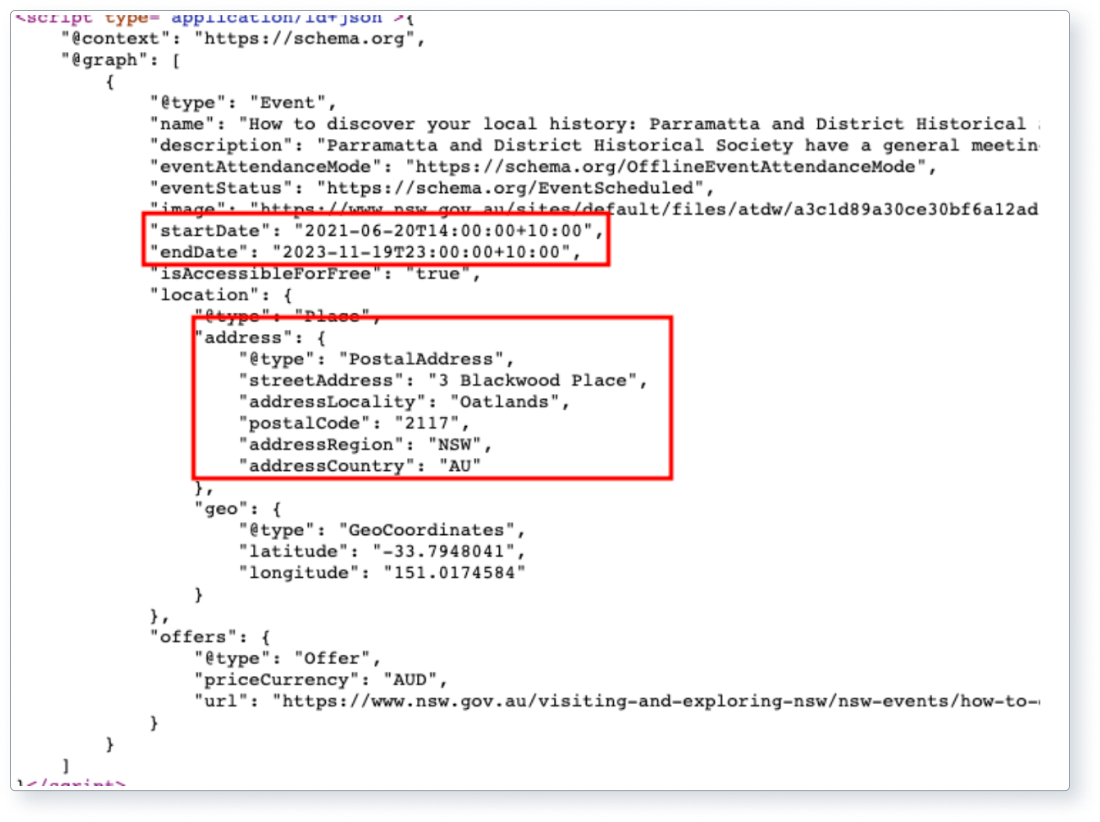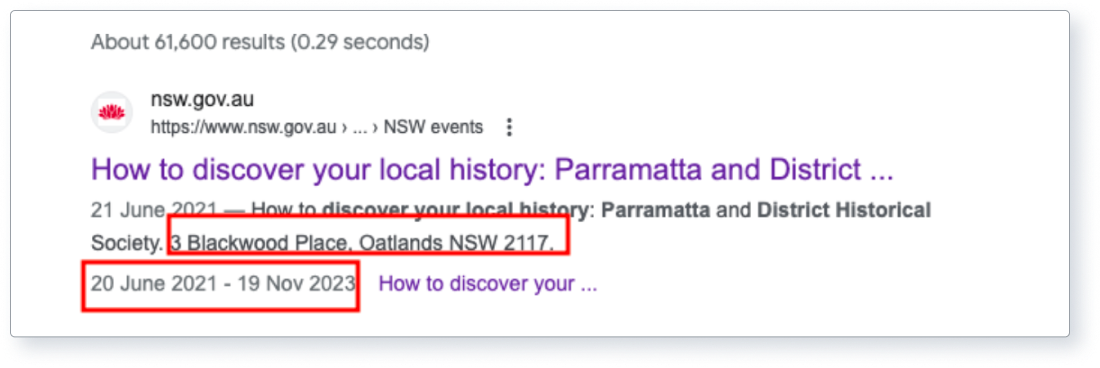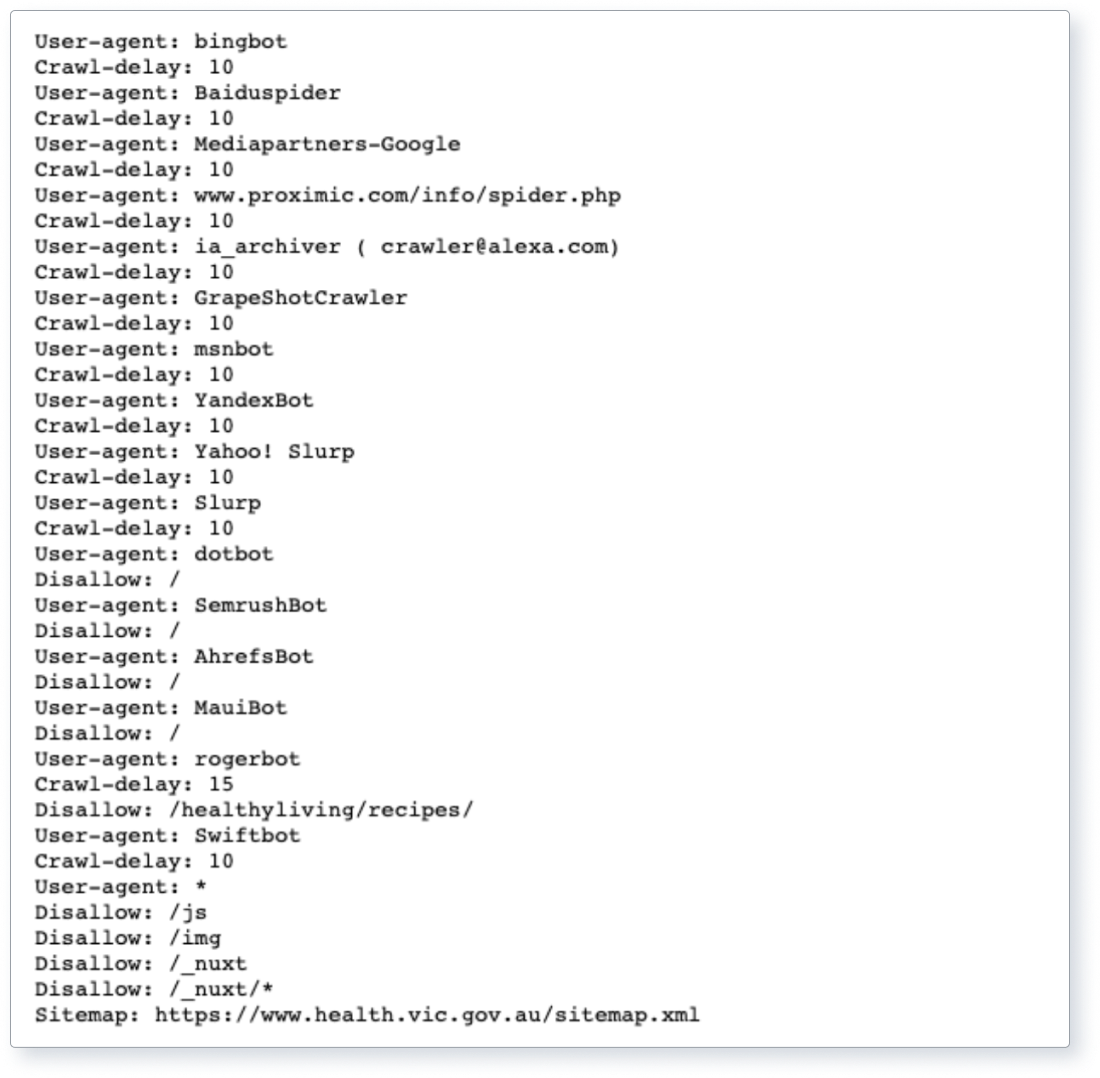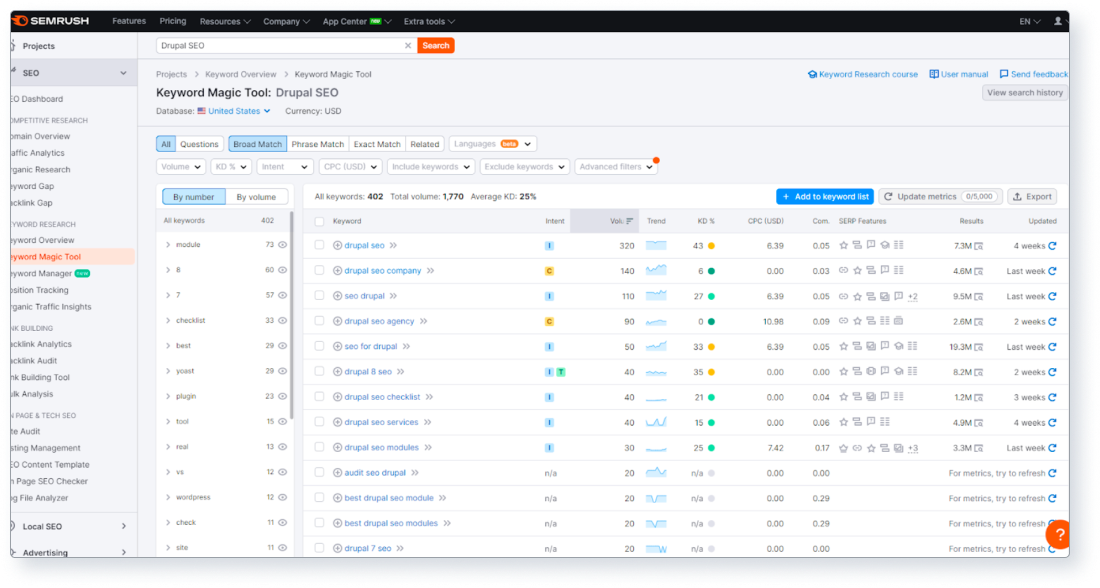
SEO to maximise the value of your Drupal site
Welcome to the fifth instalment of our comprehensive self-help guide series, focused on improving your Drupal website. In this 6-part series, we delve into six vital metrics for a successful Drupal website:
- Security
- Performance
- Accessibility
- Patches
- SEO
- Carbon emissions
In this guide we focus on search engine optimisation (SEO), looking at the importance of SEO, how it’s integrated into Drupal, the top contributing factors for effective SEO, and how you can implement best practices to improve your website's search engine rankings.
Go to our top 10 ways to improve SEO in your Drupal site
Part 1 — Understanding the metric: SEO
What is SEO?
Search engine (SEO) is the process of improving a website's visibility and rankings in search engine results (SERPs). The primary goal of SEO is to attract more organic, non-paid traffic to your website by optimising its content and structure to align with search engine algorithms and user preferences.
Why is SEO important?
SEO is a critical component of a successful website for several reasons:
Increased visibility and credibility: higher search engine rankings enhance the visibility and credibility of your website, leading to increased trust from potential visitors and customers.
Cost-effective marketing: SEO drives organic traffic to your website, which is more cost-effective than relying on paid advertising campaigns to generate traffic.
Competitive advantage: effective SEO strategies can help your website stand out in a crowded market and give you a competitive advantage over businesses that do not prioritise SEO.
Better user experience: SEO involves optimising the website for user experience, ensuring that visitors can easily find and consume the information they’re looking for.
Sustainable growth: by attracting consistent organic traffic, SEO contributes to the long-term, sustainable growth of your website and business.
Global authorities and guidelines on SEO
There are a few global authorities and guidelines that provide best practices and recommendations for optimising your website's SEO. The two most notable are:
Google Search : Google, as the world's leading search engine, offers comprehensive guidelines around best practices for search engine optimisation.
Bing Webmaster : Similarly, Bing provides a set of guidelines to help webmasters optimise websites for the Bing search engine.
The positive impact of effective SEO
Implementing effective SEO strategies has numerous positive impacts on your website:
Higher search engine rankings: properly optimised websites are more likely to rank higher in search engine results pages, increasing their visibility to potential visitors.
Increased organic traffic: higher search engine rankings lead to increased organic traffic, which is more sustainable and cost-effective than paid traffic sources.
Better user experience: SEO optimisation often involves improving the overall user experience of your website, leading to higher engagement and lower bounce rates.
Increased conversions: increased organic traffic and better user experience contribute to higher conversion rates, driving more leads, sales, and revenue for your business.
Consequences of ignoring SEO
Neglecting SEO can have severe consequences for your website, including:
Lower search engine rankings: websites that are not optimised for SEO are likely to rank lower in search engine results pages, leading to decreased visibility and organic traffic.
Higher advertising costs: without a strong organic presence, businesses may need to rely more heavily on paid advertising campaigns to generate traffic, resulting in increased marketing expenses.
Poor user experience: ignoring SEO may result in a subpar user experience, leading to higher bounce rates and lower engagement.
Lost business opportunities: failing to prioritise SEO can cause your website to miss out on potential leads, sales and revenue, negatively impacting your business's growth and success.
Part 2 — Drupal and SEO
Drupal's capabilities and features for SEO
Drupal is a powerful open-source CMS that offers several built-in and extendable features that can significantly improve your website's SEO performance:
Clean, semantic markup: Drupal generates clean, semantic markup that helps search engines understand and index your content more effectively.
Customisable URL structures: Drupal's URL alias allows you to create human-readable and search engine-friendly URLs for your content.
Granular control over metadata: Via the Metatag , Drupal provides fine-grained control over metadata, such as title tags, meta descriptions and Open Graph tags, to help optimise your content for search engines and social media sharing.
Built-in XML sitemap generation: Drupal's XML sitemap generates a sitemap that helps search engines crawl and index your website more efficiently.
Powerful taxonomy system: Drupal's taxonomy allows you to categorise and tag content, improving site structure and navigation for both users and search engines.
Alignment with SEO guidelines and best practices
Drupal's core features and modules adhere to established SEO guidelines and best practices, such as those provided by , , and the . These include:
Mobile-first design: Drupal supports responsive, mobile-first design principles, ensuring your website performs well on all devices and adheres to search engine guidelines.
Accessibility compliance: Drupal adheres to W3C accessibility , making your website more accessible to users with disabilities and boosting its search engine performance.
Fast-loading pages: Drupal's built-in caching and performance optimisation help deliver fast-loading web pages, an essential factor for both user experience and search engine ranking.
Examples of Drupal SEO done well
Services : This website is optimised for SEO, scoring 100 on the SEO metric — see the Services Australia PageSpeed
Dries Buytaert’s : This website also performs well for SEO (also scoring 100) — see Dries Buytaert’s PageSpeed
The Australian Government’s What’s Next : This website also performs well for SEO, with a score of 91 — see the What’s Next PageSpeed
Examples of Drupal SEO done poorly
Inefficiently designed websites: Some Drupal websites suffer from inefficient design choices, such as not using clean URLs, lacking proper metadata optimisation, or failing to implement a responsive design.
Overuse of Flash or JavaScript: Some Drupal sites overuse Flash or JavaScript for content display, which can make the content inaccessible to search engines and negatively impact SEO performance.
Considerations for different Drupal versions
When addressing SEO in different Drupal versions, some differences and considerations should be taken into account:
Drupal 7: Drupal 7 requires additional modules, such as the and modules, to fully optimise your website for SEO.
Drupal 8: Drupal 8 includes several built-in SEO features, such as responsive design and improved metadata management, but may still benefit from additional modules for specific optimisations. View Drupal’s SEO
Drupal 9 and Drupal 10: Drupal 9 and Drupal 10 continue to build on Drupal 8's SEO features while providing improved performance and stability, making it easier than ever to optimise your website for search engines.
Part 3 — Top 10 contributing factors for SEO in Drupal
The top 10 ways to improve SEO in your Drupal site are:
- Keyword research and optimisation
- Mobile-friendly, responsive design
- Page speed optimisation
- Content optimisation
- Internal linking structure
- Meta tags and schema markup
- URL structure
- Secure website with HTTPS
- XML sitemaps and robots.txt
- Social media integration
1. Keyword research and optimisation
What it is: Keyword and optimisation involve identifying the most relevant and high-performing keywords for your target audience and incorporating them strategically into your content and metadata.
Positive impact: Proper keyword optimisation increases the visibility of your website in search engine results, driving more organic traffic and improving your website's overall SEO performance.
Steps to implement:
Identify target keywords: Use keyword research tools, such as Google Keyword , Moz Keyword or to find relevant and high-performing keywords related to your website's content and niche.
Analyse keyword competition: Evaluate the competition for each keyword to ensure you can rank for them effectively.
Create keyword-optimised content: Incorporate target keywords strategically into your website's content, including page titles, sub-headings and body text.
Optimise metadata: Include target keywords in title tags, meta descriptions and alt tags for images.
Above: Screenshot of Semrush’s keyword dashboard/results
2. Mobile-friendly, responsive design
What it is: Mobile-friendly, responsive design ensures that your website adapts seamlessly to different devices and screen sizes, providing an optimal user experience across various platforms.
Positive impact: A mobile-friendly design improves your website's usability, keeping users engaged and reducing bounce rates. It also contributes to higher search engine rankings, as search engines prioritise mobile-friendly websites.
Steps to implement:
Choose a responsive theme: Select a Drupal theme that supports responsive design out-of-the-box, such as .
Test your website: Use tools like Google's Mobile-Friendly to evaluate your website's mobile performance.
Optimise images: Ensure images are optimised for mobile devices by using appropriate file formats and compression techniques.
Simplify navigation: Create a clear and user-friendly menu structure that’s easy to navigate on mobile devices.
Above: Mobile screenshot showing the mobile ‘hamburger’ menu and responsive design in CivicTheme.
3. Page speed optimisation
What it is: Page speed optimisation involves improving your website's load times to provide a faster and more efficient user experience.
Positive impact: Fast-loading websites improve user satisfaction and engagement, leading to lower bounce rates and higher conversion rates. Improved page speed also contributes to higher search engine rankings, as search engines prioritise fast-loading websites.
Steps to implement:
Enable caching: Configure Drupal's built-in caching features to improve your website's performance.
Optimise images: Compress and resize images to reduce file sizes and improve load times.
Minify CSS and JavaScript: Use Drupal modules like to minify and compress CSS and JavaScript files.
Use a Content Delivery Network (CDN): Use a CDN to deliver static assets faster to users from servers closer to their location, for example .
Above: Two screenshots showing Drupal’s cache settings.
4. Content optimisation
What it is: Content optimisation involves creating high-quality, relevant and engaging content that resonates with your target audience, adhering to SEO best practices.
Positive impact: High-quality content attracts more organic traffic, encourages social sharing and contributes to higher search engine rankings. Engaging content also increases user satisfaction, lowers bounce rates and promotes return visits. See the Search Engine Journal’s Why is Content Important for
Steps to implement:
Know your audience: Understand your target audience's preferences, interests and pain points to create relevant and engaging content.
Create informative, engaging content: Write content that provides value to your readers and addresses their needs and interests.
Use proper formatting: Format your content with headers, subheaders, bullet points and images to make it easy to read and digest.
Update and refresh content regularly: Keep your content up-to-date by revisiting and updating existing pages or publishing new content on a regular basis.
Above: Screenshot showing content that’s been formatted for the web.
5. Internal linking structure
What it is: Internal linking refers to the way pages within your website are linked together, creating an interconnected web that makes it easy for users and search engines to navigate and discover content.
Positive impact: A well-designed internal linking structure helps distribute link equity throughout your website, improving the visibility of individual pages in search engine results. It also enhances user experience by making it easier for users to find related content.
Steps to implement:
Create a logical site structure: Organise your content into categories and subcategories, creating a clear hierarchy for easy navigation.
Use descriptive anchor text: Include keywords in your anchor text that describe the linked content and provide context for users and search engines.
Link to important pages: Ensure high-priority pages are easily accessible by linking to them from other relevant pages within your website.
Use breadcrumbs: Implement breadcrumb navigation to help users understand their location within your website and to enhance search engine crawling.
Above: Screenshot showing the use of breadcrumbs.
6 Meta tags and schema markup
What it is: Meta are HTML tags used to provide metadata about a webpage, while schema markup is a type of structured data that helps search engines better understand your content.
Positive impact: Optimised meta tags and schema improve your website's visibility in search engine results by providing richer and more informative search snippets. This can lead to higher click-through rates and better overall SEO performance.
Steps to implement:
Optimise title tags: Include target keywords in your title tags and keep them within the recommended length (50-60 characters).
Write compelling meta descriptions: Create unique and engaging meta descriptions that encourage users to click on your search result.
Use appropriate meta tags: Use relevant meta tags, such as canonical and meta , to guide search engines in indexing your website.
Implement schema markup: Use schema.org to add structured data to your website, making it more understandable for search engines.
Above: Screenshot showing meta tags configuration in Drupal.
Above: Screenshot showing meta tags in HTML
Above: Screenshot showing meta tags in Google search engine.
Above: Screenshot of Schema.org definition in HTML.
Above: Screenshot of schema.org markup as it’s displayed in Google search engine.
7. URL structure
What it is: URL structure refers to the way your website's URLs are organised, making them easy to understand and navigate for both users and search engines.
Positive impact: A clean and descriptive URL structure enhances user experience and improves your website's search engine rankings by making it easier for search engines to crawl and index your website. See Google’s URL Structure
Steps to implement:
Use descriptive URLs: Create URLs that accurately describe the content of the page, including relevant keywords.
Keep URLs short and simple: Avoid long, complex URLs with unnecessary parameters or special characters.
Use hyphens to separate words: Use hyphens to separate words in your URLs, as they’re easier to read for both users and search engines.
Implement a consistent URL structure: Ensure your URLs follow a consistent pattern across your entire website
Above: Screenshots showing some examples of ‘good’ and ‘bad’ URLs.
8. Secure website with HTTPS
What it is: Securing your website with HTTPS involves implementing an Secure Sockets Layer (SSL) to encrypt the data transmitted between your website and its users.
Positive impact: HTTPS provides a secure browsing experience for your users and protects their sensitive data. Search engines prioritise secure websites, so implementing HTTPS can also contribute to higher search engine rankings.
Steps to implement:
Obtain an SSL certificate: Purchase an SSL certificate from a reputable certificate authority or use a free service like Let's .
Install the SSL certificate: Follow the instructions provided by your hosting provider or certificate authority to install the SSL certificate on your server.
Configure Drupal to use HTTPS: Update your Drupal settings to enforce HTTPS for all pages on your website. See Drupal’s HTTPS
Update internal links and resources: Ensure all internal links, images and other resources use HTTPS to avoid mixed content issues.
9. XML sitemaps and robots.txt
What it is: XML provide search engines with a list of all the pages on your website, while robots.txt give them instructions on which pages to crawl and index.
Positive impact: XML sitemaps and well-configured robots.txt files help search engines efficiently crawl and index your website, leading to better visibility in search engine results.
Steps to implement:
Create an XML sitemap: Use a Drupal module like XML to generate an up-to-date sitemap of your website.
Submit the sitemap to search engines: Submit your XML sitemap to major search engines like and through their respective webmaster tools.
Create a robots.txt file: Develop a robots.txt file to provide search engines with instructions on which pages to crawl and index, and which to ignore.
Monitor crawl errors and sitemap status: Regularly check your search engine webmaster tools for any crawl errors or issues with your sitemap.
Above: Screenshot of robots.txt.
Above: Screenshot of an XML sitemap.
What it is: Social media integration involves connecting your website with your social media profiles, making it easy for users to share your content and engage with your brand on various platforms.
Positive impact: Social media integration increases your website's visibility, driving more traffic and improving your overall SEO performance. It also encourages user engagement and fosters community growth.
Steps to implement:
Add social sharing buttons: Use a Drupal module like AddToAny Share to enable users to easily share your content on their preferred social media platforms.
Embed social media feeds: Integrate your social media feeds into your website using Drupal modules like Social Media or Twitter .
Include social profile links: Add links to your social media profiles in your website's header, footer, or sidebar to encourage users to connect with your brand.
Optimise content for social sharing: Use Open Graph and Twitter Card metadata to control how your content appears when shared on social media platforms.
Above: Screenshot of social sharing buttons.
By carefully implementing these top 10 contributing factors for SEO in Drupal, you can ensure that your website is optimised for search engine performance, providing a user-friendly experience and increasing your online visibility.
Part 4 — the importance of SEO
SEO plays a crucial role in ensuring your Drupal site's success. This comprehensive guide serves as a valuable resource to help you understand and implement the strategies and best practices required to optimise your website's SEO. By following the recommendations outlined in this guide, you can work towards improving your site's search engine rankings, increasing visibility and organic traffic, and ultimately driving success for your online presence.
Part 5 — Our contribution to SEO
In this section, we share our experiences, expertise and contributions specifically in the area of SEO. We also introduce our audit tool, Drupal360.io, which tracks all metrics including SEO.
Our two main areas of contribution are:
- Drupal 360: our audit tool
- Sharing knowledge with the community
1. Drupal360.io: our audit tool
As part of our commitment to the Drupal community, we're developing an audit tool, Drupal360.io, that helps site owners self-assess their websites' performance across all six crucial metrics. This powerful tool analyses your website and provides actionable insights to help you make informed decisions regarding improvements.
Our Drupal360.io tool includes the SEO metric, ensuring that you receive valuable recommendations on how to optimise your site's search engine performance. This helps you drive more organic traffic to your site and improve your site’s overall visibility and credibility.
2. Sharing knowledge with the community
Salsa shares knowledge with the border Drupal and tech community whenever we can. One example of sharing SEO knowledge can be found in Salsarian Shivan Jaikaran’s presentation: SEO + Web core vitals + Drupal: a 360 degree view on the metrics that .
Part 6 — How we can help you with SEO
Salsa provides several Drupal search engine optimisation (SEO) services to make your site more discoverable.
Our SEO services include:
- Salsa Support
- SEO audits
- SEO optimisation
1. Salsa Support
Salsa Enterprise Drupal Support services can be used to draft an SEO fixes and improvements plan that includes regular SEO audits and best practices.
2. SEO audits
An SEO audit analyses your Drupal website's structure, content and technical aspects to identify ways to improve your site’s visibility.
These services cover eight categories, including site data, keyword data, link data, content data and SERP analysis.
3. SEO optimisation
While our SEO audit identifies how to improve your website's SEO, our SEO optimisation services action these recommendations.




